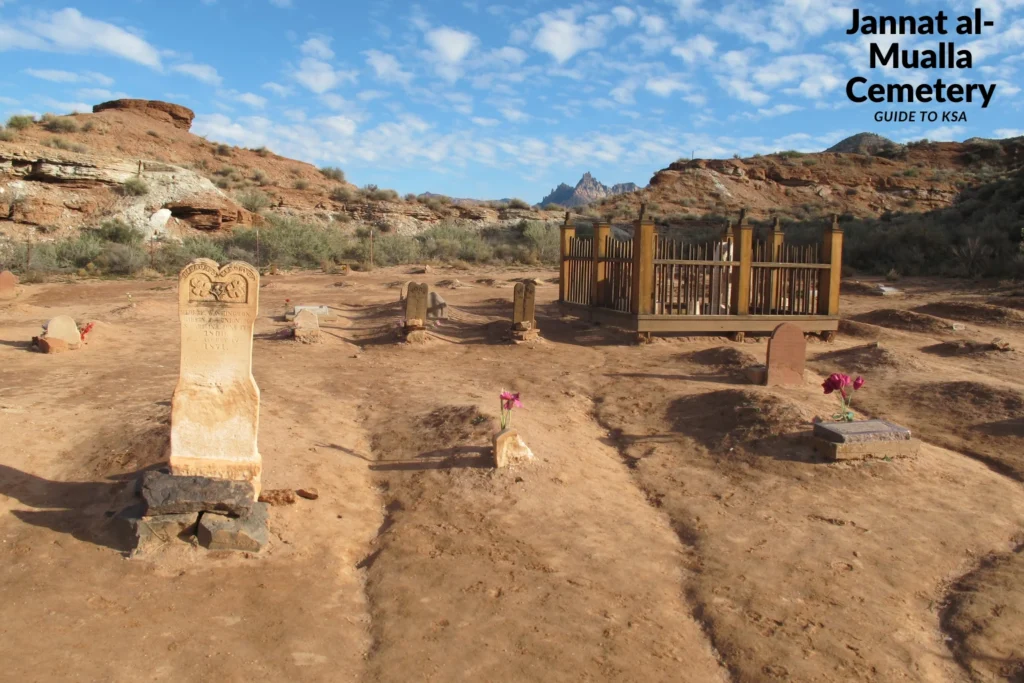It is early morning in Mecca. The streets are quieter than usual, the golden rays of the sun gently illuminating the city’s hills. Pilgrims, dressed in plain white ihram, Jannat al-Mualla make their way through narrow streets that have been walked by prophets, companions, and countless believers for over fourteen centuries.
Among these streets lies a place that holds the secrets of the earliest days of Islam — Jannat al-Mualla, also known as Al-Hajun Cemetery. To some, it is simply a burial ground. To others, it is a silent witness to the struggles, sacrifices, and faith of the Prophet’s family and companions.
The Sacred Ground of the Quraysh
Long before the Prophet Muhammad received his first revelation, Jannat al-Mualla was already a respected cemetery for the Quraysh tribe. Mecca, being the heart of the Arabian Peninsula, was not only a center for trade but also for tribal heritage. To be buried here was considered a mark of honor and belonging.
The Prophet himself, before Islam, would have known this place as a burial site of his ancestors. The land itself is ancient — a resting place for generations.

The Names That Changed History
When you stand at the edge of Jannat al-Mu‘alla today, you are not just looking at soil and stones — you are looking at the final resting place of people whose lives shaped the path of Islam forever:
- Khadijah bint Khuwaylid – The first person to believe in the Prophet , his steadfast supporter in the earliest and most difficult days. She gave her wealth, her comfort, and her life for the cause of Islam.
- Aminah bint Wahb – The Prophet’s mother, who raised him for six years before passing away on the road between Mecca and Medina.
- Abdul-Muttalib ibn Hashim – His grandfather, the man who cared for him after the death of his parents, and who famously defended the Kaaba during the Year of the Elephant.
- Abu Talib – The uncle who shielded him from the wrath of Quraysh even without becoming a Muslim himself.
- Qasim and Abdullah – His sons who passed away in childhood.
- Asma bint Abu Bakr – The courageous woman who risked her life to bring food to the Prophet ﷺ and Abu Bakr during their migration.
- Abdullah ibn Zubair – Companion, warrior, and grandson of Abu Bakr.
Each name is a story. Each grave holds a life that once walked alongside the Messenger of Allah ﷺ.
The Cemetery of Beauty
If you could travel back a few centuries, you would hardly recognize Jannat al-Mualla. It was once a place of graceful domes, white marble headstones, and engraved calligraphy. Intricate Ottoman-style mausoleums marked the graves of the most prominent figures. Pilgrims came not just to pay respects but to see the beauty — to stand before the resting place of Khadijah or Abdul-Muttalib and feel a connection to history.
The cemetery was alive with the quiet hum of visitors reciting Qur’an, families teaching their children about the people buried here, and scholars giving lessons on the life of the Prophet ﷺ and his companions.
The Change of 1925
In 1925, everything changed. Following the religious interpretation that Islam prohibits building structures over graves to prevent idolization, the ornate mausoleums were demolished. The domes came down. The carved marble stones were removed.
In their place remained a bare earth cemetery, with simple mounds of stone to indicate graves. To some, this was a return to simplicity and equality in death. To others, it felt like losing a tangible connection to the past.
A Place of Humility Today
Walk into Jannat al-Mualla today and the air is different. The noise of the city fades. A plain white wall encloses the cemetery, and inside, there are no grand markers — only rows of unmarked stone mounds.
There are no signs telling you, Here lies Khadijah, or This is the grave of Abdul-Muttalib. You stand in silence, aware that beneath this ground rest some of the most honored people in Islam, even if their exact spots are no longer known.
The Pilgrim’s Reflection
A pilgrim might stand here for only a few minutes, yet those moments stay in the heart forever. You begin to imagine Khadijah’s sacrifices, Abu Talib’s protection, Aminah’s love, and Abdul-Muttalib’s strength. You realize that this ground is not just dirt — it is history, faith, and love woven together.
The simplicity of Jannat al-Mualla teaches a quiet lesson: no matter the greatness of a person in this world, in death we return to the same soil. What remains is not marble or domes, but the deeds we leave behind.
The Eternal Message
Jannat al-Mualla is more than a cemetery. It is a reminder that Islam began with people who gave everything for their faith. It tells us that love for the Prophet ﷺ includes love for those who stood by him.The walls may be plain, the markers few, but the legacy of those buried here remains alive in the hearts of millions. Every time a pilgrim prays here, the story continues


